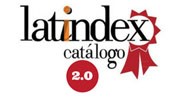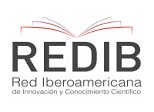Music Therapy as a Complementary Therapy in Inclusive Children Education
DOI:
https://doi.org/10.69890/hallazgos21.v3i0.260Keywords:
child music theraphy; special educational needs; inclusive education; development; complementary therapy.Abstract
Music therapy is the use of music or its musical elements (such as sound, rhythm, melody, and harmony), by a qualified professional, called music therapist, with a patient or group, or within the educational field with a student or group of students, with the intention to facilitate and promote communication, learning, mobilization, expression, organization and other relevant therapeutic elements; for achieve changes, and to satisfy physical, emotional, mental, social and cognitive needs. Therefore, within young students that may present certain special educational needs, this therapy has an effect on the maintenance and rehabilitation of those shortfall areas that require urgent attention; thus, promoting significant changes in the children. It is a discipline that has been studied with scientific rigor for more than 70 years, but at present, it is still new in the educational, occupational and medical fields. This theoretical revision will explain various aspects of music therapy which are essential for it to be understood as in the case of other experimental studies: definitions, international and national state of art, fields of action - child age, objectives pursued in Inclusive Education and the influence of music therapy for the development from the very first childhood.
References
Actas XII Congreso Mundial de Musicoterapia (2008). Música cultura sonido salud. Buenos aires: Argentina.
Agudo, I. (2006). Definición y Funciones de la Musicoterapia. Material inédito. Máster de Musicoterapia ISEP. Barcelona.
Alvin, J. (1984). Musicoterapia. Barcelona, España: Paidós.
Benenzon, R. O. (1981). Manual de Musicoterapia. Barcelona, España: Paidós.
Benenzon, R. O. (2011). Musicoterapia, de la teoría a la práctica. Madrid, España: Paidós.
Betés Del Toro, M. (2000). Fundamentos de musicoterapia. Madrid, España: Morata.
Bruscia, K. (2007). Musicoterapia, Métodos y prácticas. México: Pax México.
Davis, W. B., Gfeller, K. E., Mercadal-Brotons, M., y Thaut, M. H. (2000). Introducción a la Musicoterapia: Teoría y práctica (1ª ed.). Barcelona, España: Boileau.
Montánchez, M. L. (2012). Musicoterapia para niños con conductas inadaptativas en Esmeraldas. Proyecto de investigación. Pontificia Universidad Católica del Ecuador, Sede Esmeraldas.
Montánchez, M.L. y Palma, J. (2014). Musicoterapia y educación inclusiva. Pontificia Universidad Católica del Ecuador, Sede Esmeraldas.
Montúfar, E. (2007). Trabajo con Musicoterapia en Capacidades especiales, primera infancia. INNFA, Ecuador.
Palma, J. (2010). Musicoterapia y discapacidad. MIES, Azuay, Ecuador.
Palma, J. y Donoso, E. (2009). Musicoterapia Vocal Analítica, Voz y Análisis de movimiento. Taller vivencial, MMT, MFA.
Poch, S. (1999). Compendio de Musicoterapia. Barcelona, España: Herder.
Shapira, D. (2013). Musicoterapia. I congreso Educación y Terapias Creativas. Universidad de las Américas. Quito, Ecuador.
Valarezo, A. (1999). Seminario Taller Musicoterapia Aplicada a Grupos. Pontificia Universidad Católica del Ecuador, Quito.
Downloads
Published
How to Cite
Issue
Section
License
Los artículos enviados a la Revista Científica Hallazgos21 deberán ser totalmente originales e inéditos.
Los autores son los responsables de los textos y las imágenes incluidas en los artículos y no necesariamente reflejan el pensamiento de la editorial o de la Pontificia Universidad Católica del Ecuador, Sede Esmeraldas (PUCESE).
Los autores disponen cederle a la Revista Científica Hallazgos21 todos los derechos inherentes para la edición, publicación y distribución o divulgación del mismo.
Se autoriza a las revistas firmantes de los acuerdos de Encuentros de Revistas Latinoamericanas para reproducir en parte o totalmente los artículos con la sola mención de la fuente claramente señalada.







